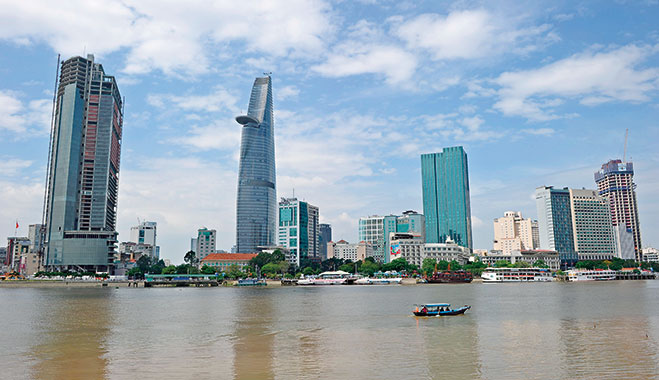
Vietnam’s banking industry is the lifeline of the economy and the biggest driver of the country’s growth. It plays a crucial role in the financial intermediaries system and is relied upon heavily by the economy, largely as a result of an under-developed capital market. In recent years, Vietnam’s financial sector has undergone a series of significant changes, which have led to marked improvements. For example, by the end of 2014, total assets grew by 1.5 times GDP, while total credit for the economy has reached 100 percent of the GDP, thereby creating a favourable environment that can meet the country’s development needs.
Following the impact of the global financial crisis, positive recovery signs can be seen in Vietnam’s banking sector. That being said, certain areas still require improvement in order to build a more sustainable and efficient financial system, such as adopting more international administration standards, resolving bad debt and the need for greater transparency. Refining capital demand, levels of liquidity and better risk protection can also contribute to a more robust financial sector. Despite such challenges, Vietnam is at a pivotal moment in its banking history and on the cusp of a new period in terms of development. Nguyen Dinh Tung, CEO of Orient Commercial Joint Stock Bank (OCB), told World Finance about the ongoing reform of Vietnam’s banking industry.
Enhancing the mechanisms to achieve greater competitive power for Vietnam’s banking system can bring it up to par with other countries in
the region
A budding industry
As the leading organisation within the sector, the State Bank of Vietnam (TSBV) is shaping industrial development, while also bolstering financial activities and strongly supporting economic improvement. “In recent years, TSBV has deployed a series of hard-hitting administrative solutions in order to deeply reform the banking sector and resolve challenges within the financial industry, particularly in regards to bad debt and credit capital flow guarantees”, said Tung. This is being achieved through the thorough inspection, supervision and, if necessary, reconstruction of credit organisations. The process allows the accurate evaluation of an institution’s operations, administrative capabilities and transparency levels, thereby permitting a holistic overview of each bank’s proficiencies.
Reform has led to the withdrawal of poorly operating banks from the market, which in effect is creating a more proficient financial sector. “In such cases, TSBV has accommodated the exit and directly bought back shares”, said Tung. TSBV also encourages knowledge sharing of possible mergers in order to increase competitive power. Moreover, banks are urged to set systemic bad debt to below three percent, which can be achieved by selling bad debt to the Vietnam Asset Management Company, thus increasing credit quality within the system.
The recent trend of regional and international integration, in regards to the ASEAN community in particular, presents further opportunities for the enlargement of Vietnam’s financial sector. “Enhancing the mechanisms to achieve greater competitive power for Vietnam’s banking system can bring it up to par with other countries in the region”, said Tung.
Leader of the pack
In progressing along with Vietnam’s banking system, OCB has implemented a strategy to become a leading retail bank. “Our mission is to create optimum solutions for our customers and investors”, said Tung. “In order to achieve this goal, we are investing heavily in reconstruction activities.”
As such, OCB has transformed its operating model to incorporate specialist groups that can serve various types of customers, from individuals and SMEs, to big firms and niche business groups. “The aim is to optimise the business model together with offering the best service for all customer groups”, said Tung. OCB is also developing new corporation identify programmes in order to revitalise its look and appeal as a modern, friendly and convenient bank. Creating a favourable exchange environment will also enhance the customer experience.
Given the trend of digital technology, particularly within the banking industry, OCB is investing in new platforms in order to reach its target of becoming one of Vietnam’s top five banks. Using digital technology can also attract new customers, while simultaneously encouraging existing customers to use more products and services on offer.
Risk management is another major area of focus for OCB, which is working closely with KPMG so as to meet international standards and Basel II. Moreover, this partnership is helping the bank to employ customer credit rating models, effective risk management schemes, credit index management and a robust debt resolution programme. As well as providing support for current safety guarantee systems, this approach also accelerates the resolution of existing issues in the system, while creating momentum for OCB’s continued development in the coming years. Given the potential of Vietnam’s banking sector, not to mention that of the economy, it is an exciting time for the industry and for those that are growing in conjunction with it.


